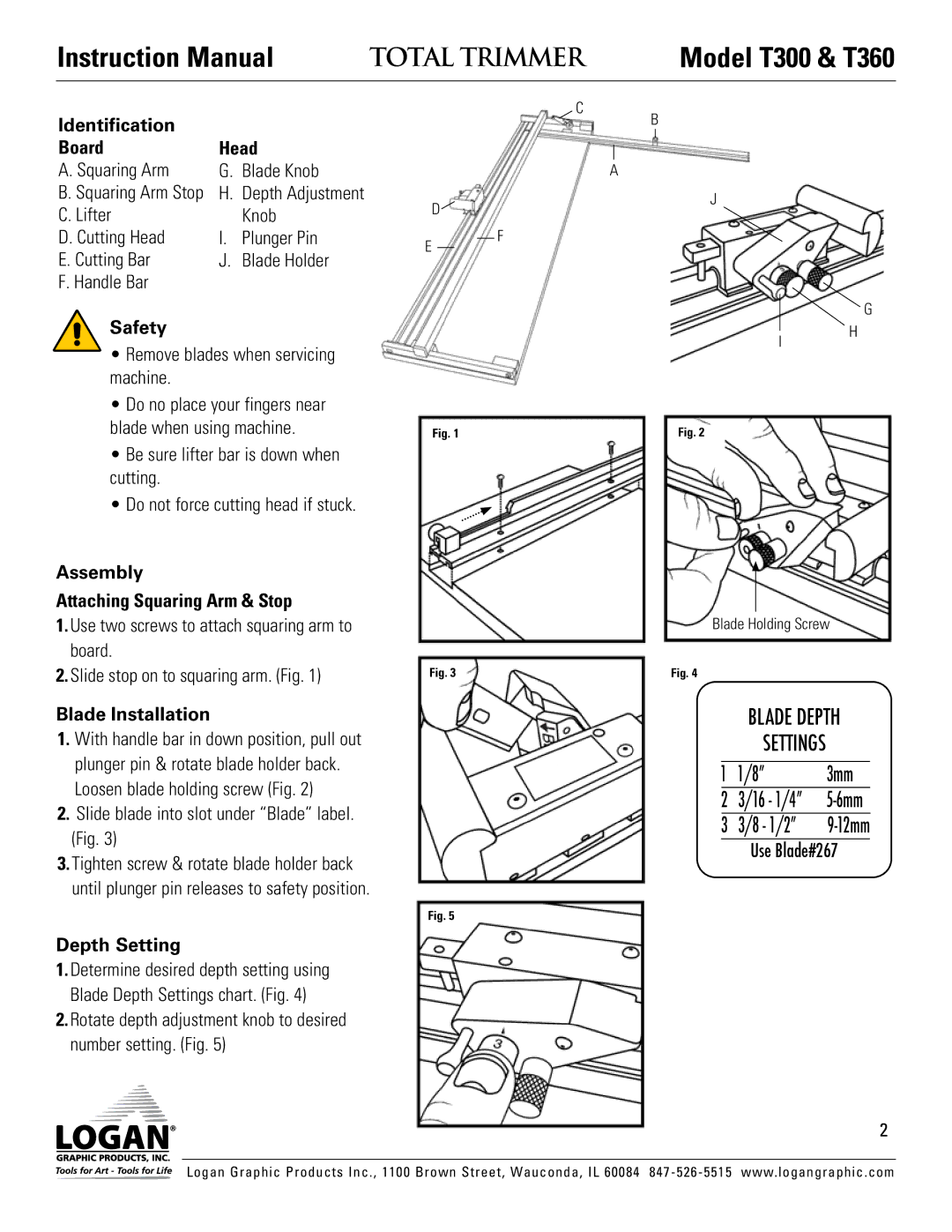T360, T300 specifications
Logan Graphic Products is known for its innovative solutions in the field of graphic arts and framing, and two standout models in their product line are the T300 and T360 cutting machines. These machines are designed for those who require precision and efficiency in cutting materials for framing, matting, and various art applications.The Logan T300 is a versatile and user-friendly cutting machine, ideal for both amateur and professional framers. One of the T300's main features is its precise cutting capability, which allows users to create clean and accurate bevel cuts on mat boards. The machine utilizes a professional-grade cutting head that provides smooth and consistent cuts, ensuring high-quality results every time. The T300 supports multiple cutting angles, making it suitable for a range of framing projects.
On the other hand, the Logan T360 enhances many of the T300's features with added technology tailored for more complex tasks. This model includes advanced alignment features that allow for quicker setup and adjustments, significantly speeding up the workflow. The T360 is equipped with a unique measuring system that includes a built-in ruler and a straight edge that helps users easily measure and cut materials with precision. This feature is particularly beneficial for projects requiring exact measurements, such as custom matting for artwork or photographs.
Both machines utilize Logan's patented cutting technology, which not only ensures durability but also enhances the longevity of the blades used. The blades are designed to maintain their sharpness, reducing the frequency of replacements and saving time during production. Additionally, both the T300 and T360 are compatible with a wide variety of materials, including standard mat board, foam board, and more, making them adaptable for various creative projects.
Ergonomics is another strength of the Logan systems. Both models are designed for ease of use, with comfortable grips and a user-friendly interface. This focus on ergonomics is critical, especially during long cutting sessions, as it minimizes fatigue and supports a more productive work environment.
In summary, the Logan T300 and T360 cutting machines stand out for their precision, versatility, and innovative features, making them excellent choices for artists, framers, and hobbyists alike. Whether for professional framing or creative projects, these machines meet the demands of users looking for both quality and efficiency in their cutting tasks.

